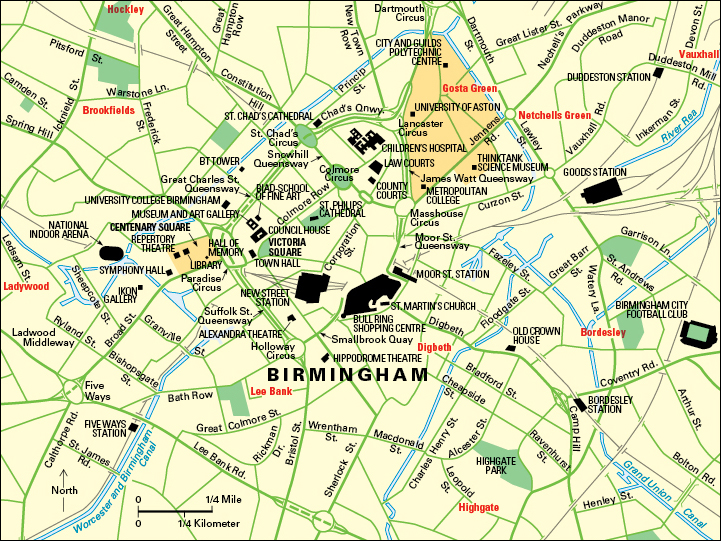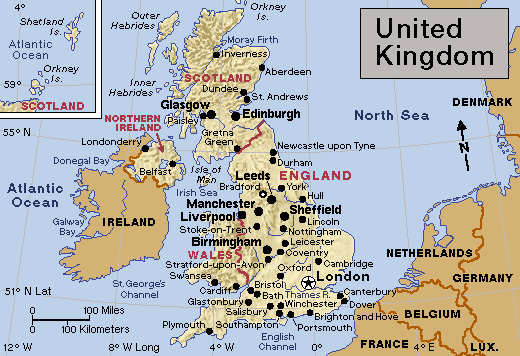Birmingham << BUR mihng uhm >> (pop. 1,144,919) ranks as the second largest city in the United Kingdom. Only London has more people. Birmingham and the surrounding metropolitan area form the United Kingdom’s chief manufacturing area. The city lies in west-central England on a plateau bounded by the Rivers Trent, Avon, and Severn.

City.
Centenary Square, in the center of Birmingham, is the city’s main cultural center. It includes a concert hall and a theater. Birmingham Central Library, one of Europe’s largest city libraries, is near the square. The city has a symphony orchestra and is the home of Birmingham Royal Ballet and Birmingham Museum and Art Gallery. The city’s historic buildings include Aston Hall, completed in 1635; St. Philip’s Cathedral, completed in 1715; and the Town Hall, which opened for public meetings and concerts in 1834. The area has three universities: Aston University, Birmingham City University, and the University of Birmingham.

Birmingham has many high-rise residential buildings, but most people live in single-family houses. The older areas of the city, such as Sparkbrook, have many red brick terraced row houses (lines of houses that are attached to one another and look alike). Birmingham is a multicultural city whose residents come from diverse ethnic and religious backgrounds.
Economy.
Birmingham was a leading center of the automobile industry through much of the 1900’s. Several automobile manufacturing factories have closed, but the manufacture of automotive components remains an important part of Birmingham’s economy. Other products made in Birmingham include beer, chocolate, fabricated metal products, jewelry, and machine tools. The city hosts many conferences, and its cultural attractions and shops make it a popular destination for British tourists.
History.
People have lived in the Birmingham area for thousands of years. The Romans, who invaded Britain in A.D. 43, built a fort near what is now the University of Birmingham. Many Roman roads run through the region. Anglian settlers came to the Birmingham area in the 600’s and 700’s. The town gained its name from Peter de Birmingham (also spelled de Bermingham), a landowner of the 1000’s. His descendants continued to rule the town for about 500 years.

Industries began to develop in Birmingham in the 1500’s and grew rapidly during the Industrial Revolution, a period that began in the 1700’s. Canal builders developed a system of canals to improve the city’s links to the rest of England. Birmingham grew into an industrial center and one of the leading cities of the United Kingdom.
During World War II (1939-1945), German warplanes bombed Birmingham in an effort to destroy its factories. German bombs damaged many sections of the city, including the central business district. The city did much rebuilding during the 1950’s and 1960’s. But many criticized the style of the new downtown area and its buildings as drab and industrial. In the late 1900’s, Birmingham greatly expanded its cultural facilities and added several attractive modern buildings. Notable buildings include Symphony Hall, the National Exhibition Centre, and the National Indoor Arena.
